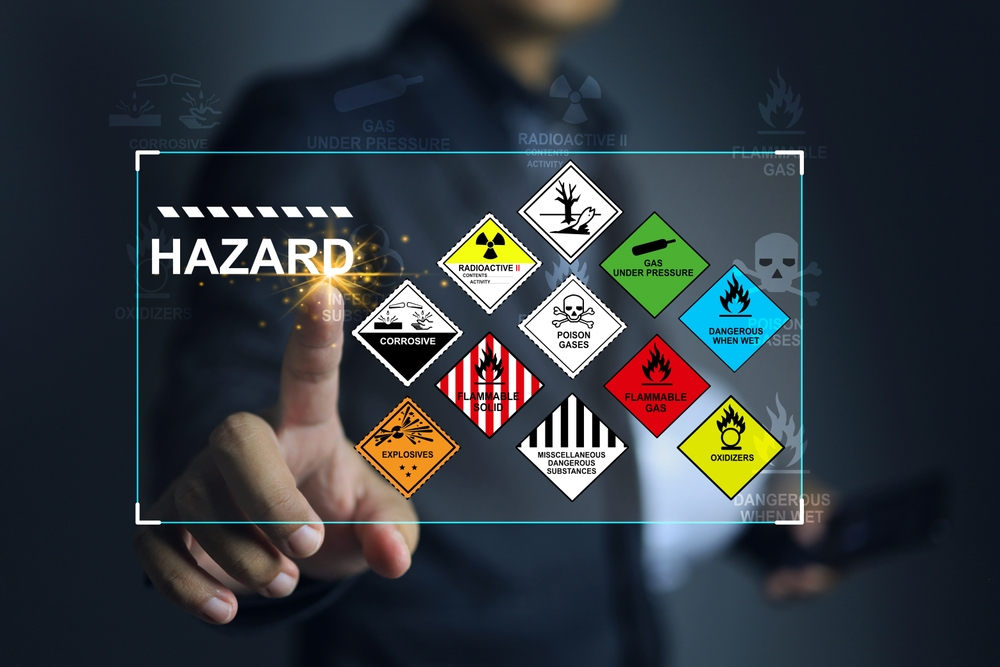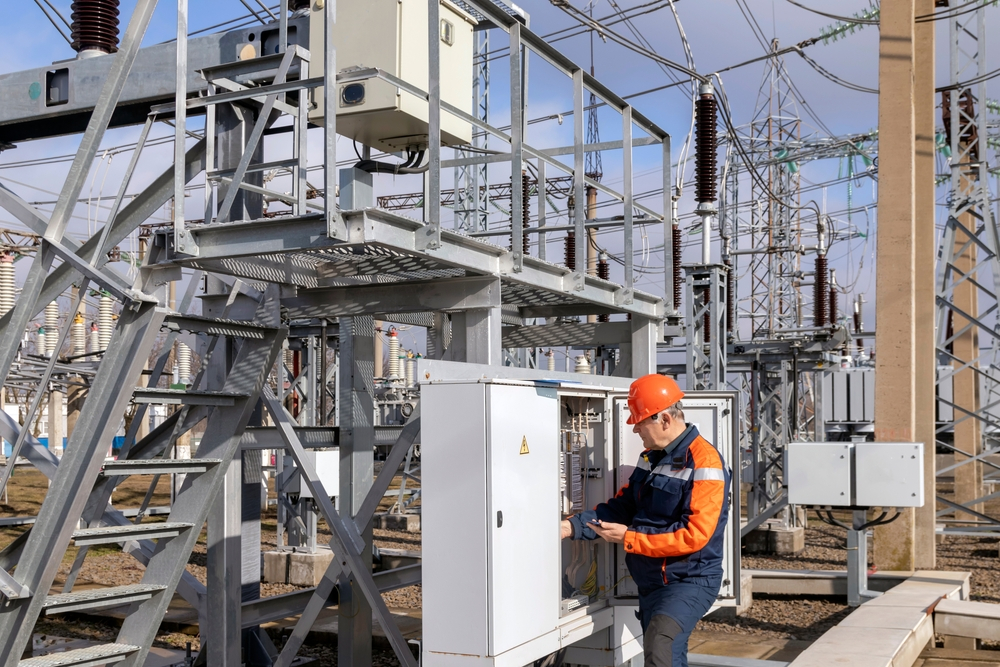How Roar Solutions can Save You Time, Stress, and Money.
How Roar Solutions can Save You Time, Stress, and Money.
Blog Article
The smart Trick of Roar Solutions That Nobody is Discussing
Table of ContentsThe Main Principles Of Roar Solutions See This Report on Roar SolutionsWhat Does Roar Solutions Do?
In order to protect setups from a prospective surge a method of evaluating and categorizing a potentially dangerous area is needed. The function of this is to guarantee the proper selection and installation of devices to inevitably prevent an explosion and to ensure security of life.
(https://www.40billion.com/profile/91601565)
No devices needs to be mounted where the surface temperature level of the tools is more than the ignition temperature of the offered danger. Below are some typical dust hazardous and their minimum ignition temperature level. Coal Dirt 380C 225C Polythene 420C (melts) Methyl Cellulose 420C 320C Starch 460C 435C Flour 490C 340C Sugar 490C 460C Grain Dirt 510C 300C Phenolic Material 530C > 450C Aluminium 590C > 450C PVC 700C > 450C Residue 810C 570C The chance of the risk existing in a focus high adequate to create an ignition will differ from place to location.
In order to identify this threat a setup is split into locations of threat relying on the quantity of time the dangerous is existing. These locations are referred to as Areas. For gases and vapours and dirts and fibres there are 3 areas. Zone 0 Area 20 A harmful ambience is highly likely to be present and may be present for lengthy periods of time (> 1000 hours annually) and even continually Area 1 Zone 21 A hazardous atmosphere is possible however not likely to be existing for long durations of time (> 10 450 C [842 F] A category of T6 means the minimum ignition temperature level is > 85 C [185 F] Harmful area electric devices possibly created for use in greater ambient temperature levels. This would indicated on the score plate e.g. EExe II C T3 Ta + 60C( This indicates at 60C ambient T3 will certainly not be surpassed) T1 T1, T2, T3, T4, T5, T6 T2 T2, T3, T4, T5, T6 T3 T3, T4, T5, T6 T4 T4, T5, T6 T5 T5, T6 T6 T6 A T Class ranking of T1 implies the optimum surface temperature level produced by the tool at 40 C is 450 C. Presuming the associated T Class and Temperature rating for the tools are suitable for the location, you can constantly make use of an instrument with a much more stringent Division ranking than needed for the location. There isn't a clear answer to this inquiry. It actually does depend on the sort of devices and what repair work require to be accomplished. Equipment with details examination treatments that can not be executed in the area in order to achieve/maintain 3rd party ranking. Should come back to the manufacturing facility if it is prior to the devices's solution. Field Repair Service By Authorised Worker: Difficult screening may not be called for however certain procedures might need to be adhered to in order for the devices to maintain its third event rating. Authorised workers should be used to execute the work properly Repair must be a like for like replacement. New component need to be thought about as a direct replacement requiring no unique testing of the tools after the repair service is full. Each tool with a hazardous score need to be examined individually. These are outlined at a high degree listed below, but also for even more detailed information, please refer directly to the standards.
Little Known Questions About Roar Solutions.
The equipment register is a comprehensive database of equipment documents that consists of a minimum set of fields to recognize each product's area, technological parameters, Ex-spouse classification, age, and environmental information. This info is important for tracking and handling the equipment efficiently within hazardous locations. On the other hand, for periodic or RBI tasting inspections, the quality will be a combination of Thorough and Close assessments. The ratio of Comprehensive to Shut examinations will be identified by the Tools Risk, which is analyzed based on ignition risk (the likelihood of a resource of ignition versus the probability of a flammable environment )and the harmful location classification
( Zone 0, 1, or 2). This variant will likewise affect the resourcing needs for work prep work. Once Great deals are defined, you can establish tasting strategies based upon the example dimension of each Whole lot, which describes the variety of arbitrary equipment items to be checked. To determine the required sample size, two facets require to be evaluated: the size of the Whole lot and the classification of examination, which suggests the level of initiative that ought to be used( minimized, normal, or boosted )to the inspection of the Great deal. By integrating the group of inspection with the Whole lot size, you can then develop the ideal denial requirements for a sample, implying the allowable variety of damaged things discovered within that sample. For even more information on this process, please describe the Power Institute Guidelines. The IEC 60079 common suggests that the maximum period in between examinations must not surpass three years. EEHA examinations will certainly likewise be conducted beyond RBI campaigns as part of set up upkeep and devices overhauls or repair work. These inspections can be attributed towards the RBI sample sizes within the affected Whole lots. EEHA evaluations are conducted to recognize faults in electric devices. A weighted racking up system is vital, as a single tool might have several mistakes, each with varying levels of ignition threat. If the consolidated rating of both assessments is less than twice the mistake score, the Whole lot is deemed acceptable. If the Great deal is still considered inappropriate, it has to go through a full inspection or validation, which might activate stricter assessment protocols. Accepted Lot: The causes of any kind of mistakes are determined. If an usual failure mode is found, extra equipment may call for maintenance. Mistakes are identified by severity( Safety and security, Stability, Housekeeping ), ensuring that urgent issues are examined and dealt with without delay to mitigate any type of navigate here effect on security or operations. The EEHA data source ought to track and tape the lifecycle of mistakes in addition to the corrective activities taken. Implementing a durable Risk-Based Examination( RBI )method is critical for making sure compliance and safety in handling Electric Equipment in Hazardous Areas( EEHA) (eeha training). Automated Fault Rating and Lifecycle Monitoring: Effortlessly handle mistakes and track their lifecycle to enhance evaluation precision. The introduction of this assistance for risk-based inspection additionally enhances Inspectivity's setting as a best-in-class remedy for regulative compliance, in addition to for any type of asset-centric evaluation use situation. If you want finding out more, we invite you to request a demo and find just how our remedy can transform your EEHA management procedures.
The Definitive Guide for Roar Solutions

In regards to eruptive threat, an unsafe area is a setting in which an eruptive ambience exists (or may be expected to be existing) in quantities that require special safety measures for the construction, setup and usage of tools. high voltage courses. In this write-up we explore the obstacles faced in the workplace, the risk control actions, and the called for competencies to function securely
It is an effect of contemporary life that we make, save or take care of a variety of gases or fluids that are considered flammable, and a range of dusts that are regarded combustible. These materials can, in specific conditions, create eruptive environments and these can have significant and terrible effects. The majority of us know with the fire triangle get rid of any one of the three components and the fire can not take place, but what does this mean in the context of harmful locations? When damaging this down into its easiest terms it is basically: a combination of a particular quantity of launch or leak of a particular substance or product, combining with ambient oxygen, and the visibility of a source of ignition.
In most instances, we can do little about the levels of oxygen in the air, but we can have significant influence on resources of ignition, as an example electrical devices. Hazardous areas are documented on the dangerous area classification drawing and are determined on-site by the triangular "EX" indicator. Here, amongst other key information, areas are divided into three types depending upon the threat, the likelihood and period that an eruptive ambience will exist; Zone 0 or 20 is deemed one of the most harmful and Zone 2 or 22 is deemed the least.
Report this page